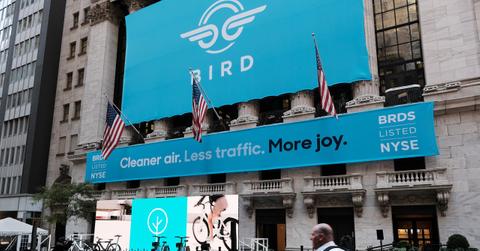SEC Poses New SPAC Disclosure Requirements — What to Know
The SEC has proposed new disclosure requirements for blank-check firms, also known as SPACs. How will the new requirements impact the SPAC market?
March 31 2022, Published 1:55 p.m. ET

The reverse merger market has cooled dramatically over the past year after a record 314 SPACs went public in the first quarter of 2021 alone. The SEC is proposing increased regulation on SPACs, which could make disclosure requirements more intense for these public market vehicles and their targets.
The move comes after failed SPACs like Bill Ackman’s Pershing Square Tontine Holdings have already cost investors millions of dollars. SEC Chair Gary Gensler is big on increased regulation, and the new proposed disclosure requirements prove he’s moving quickly with SPACs.
What does the proposal say about the SEC’s new SPAC rules?
On March 30, the SEC released a collection of proposed rule changes that would increase disclosure requirements for SPACs and their target companies.
The new rules would reduce the amount of insider information by requiring SPACs to publicize details they currently are able to keep away from public eyes. For example, conflicts of interest (like those between investors and insiders), marketing practices, underwriters, and more will all likely need to be disclosed to the public.
Also, there would be a limit on forward-looking projections to avoid overcompensating for a lack of current profit or results.
SEC Chair Gary Gensler supports the proposal.
Gensler has been pushing for stricter regulation in the public market, private market, and cryptocurrency markets since entering his post in April 2021. He criticized SPACs and said, “They have on average been pretty costly and not performed up to the marketing.”
The SEC proposal could impact the IPO market.
If passed, these requirements would make it more difficult for SPACs and target companies to raise money (such as the ever-popular private investment in public entity, or PIPE). It would also make the process of actually going through with an IPO as a SPAC more difficult. SPACs became so popular in part because they were easier and often cheaper to go public than traditional IPOs.
The regulation could protect investors—especially retail investors with limited capital—from shady SPAC practices. Just look at Electric Last Mile Solutions Inc. (ELMS), which went public via a SPAC in June 2021. Since then, the founders stepped down due to insider trading accusations. They bought up equity for cheap just before announcing the company’s public market merger.
ELMS is currently being probed by the SEC and its stock has lost 85.7 percent as of March 31. Presumably, the SEC’s proposed disclosure requirements would prevent messes like this.
What’s next for the SEC’s SPAC disclosure requirements proposal?
The SEC has voted to open the proposal to public comments, which means anyone can chime in about the disclosure requirements within the 60 days following March 30. Some supporters want to stop the proposal in its tracks, while others support the change in operations for SPACs.
Currently, SPACs are used much differently than they were in the 1980s, when they were shady and reserved largely for penny stock fraud. Still, there’s a balance between being transparent with investors and letting them take on the risk that is the public market—but the U.S. is still working on finding that balance.

